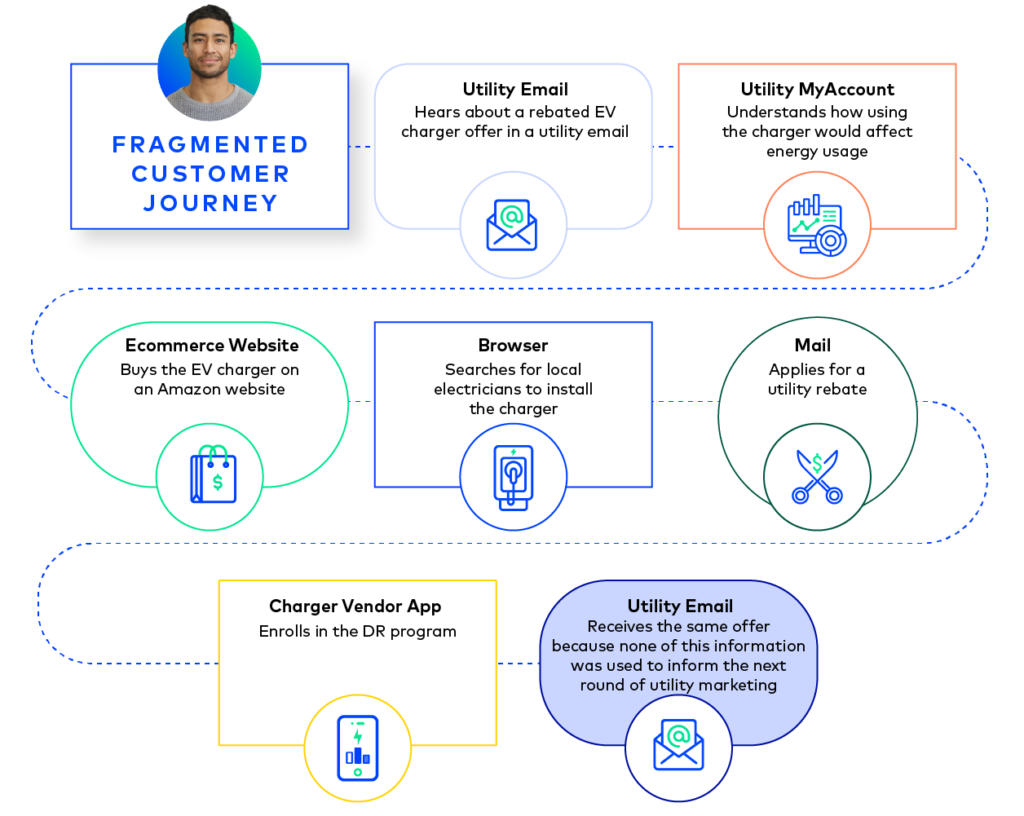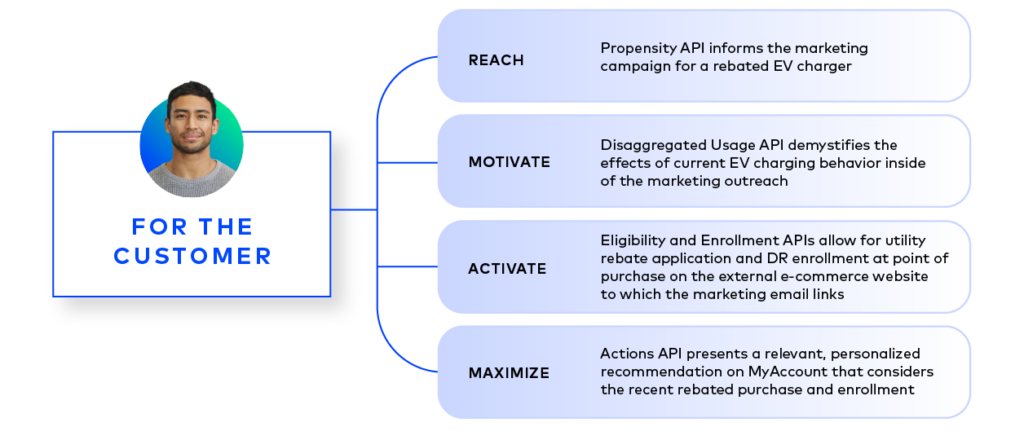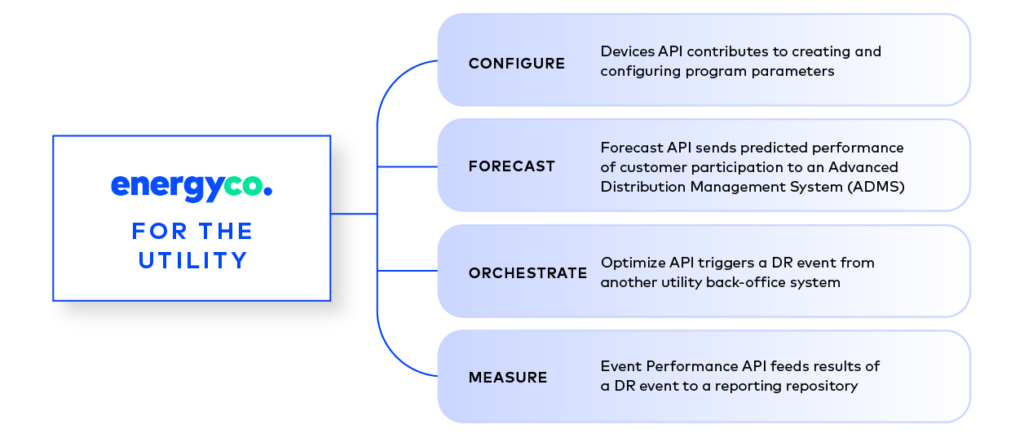As energy bills reach 10% of annual spend for the average American and customers across segments adopt distributed energy resources (DERs) at an unprecedented pace, energy-related decisions like how to manage spend or which rate to choose are suddenly more top of mind. Consequently, offering guidance to customers around these decisions – and reciprocal guidance to the utility, who is navigating two-way power flow from these DERs – is now more needed than ever.
Although progress has already been made to unlock energy-related data to guide the customer experience, those efforts have either excluded the utility altogether or haven’t supported the entire customer journey from outreach to education and action. As a result, the customer might be better informed about their energy, but the experience still misses benefits like utility rebates and program enrollment opportunities. Or, the utility lacks data on customers’ everyday actions in the larger energy ecosystem to enable deeper personalization or guide system planning. That’s why Uplight built a platform with utility buy-in that de-silos customer and program data, makes that data securely accessible, and simplifies active grid participation for all stakeholders in our grid modernization.
Disconnected Systems Hinder Customer Satisfaction and Program Enrollments
While electric utilities share the same fundamental goal of providing power, no two are exactly alike; they can vary widely in their supply and demand mix, programs offered, and how their regulating body makes decisions. Vendors in this space have done their best to accommodate for these differences, but what often results is a mishmash of customer offerings and significant fragmentation between programs deployed within utilities. Add on an increasing volume of mass-market offerings from providers like Sunpower or Tesla and the result can be described as coordinating energy-related decisions using a swivel chair.
There are both customer-facing and back-office-facing challenges associated with these disconnected systems. In particular, the customer can have entirely separate program interaction experiences across different parts of a single journey, with inconsistent insights and recommendations to boot. For example, the customer journey to enroll an EV charger in a utility-sponsored demand response (DR) program might look like:

The back-office challenges are just as impactful. For example, customer-provided information captured in the vendor-managed app – like a misspelled street address – may differ from the utility record required to verify program eligibility. That type of data mismatch can contribute to the 35% of customers applying for a DR program but unable to qualify for it.
Disconnected customer and back-office systems combine to result in a dissatisfied customer, a utility without a program enrollment, and a vendor with lost revenue.
Desiloing Data Enables More Intelligent and Simplified Experiences
Sharing data across a myriad of systems is inherently complex, and even more so when a customer journey involves multiple steps like the example above. To summarize this multi-step journey, the offer must reach the customer with the right context to motivate and ultimately activate them (i.e. enroll in a program or make a purchase), followed by tailored guidance to maximize the offer’s value or capitalize on a new one. Even without reducing the number of channels, simply consolidating some of the steps through data-sharing would significantly streamline the customer experience. Beyond the customer, the vendor and utility would benefit from access to one another’s data in this scenario. In particular, the vendor could leverage eligibility data to reduce program application rejections, and the utility could leverage purchase information to inform future recommendations.
Similarly, the utility’s grid-management journey involves multiple steps when managing a portfolio of now controllable EV chargers. In particular, it requires everything from configuring DERs within a program, forecasting their performance, orchestrating them, and then measuring their grid impact. Often utilities manage several DER portfolios, and each can be orchestrated by entirely separate systems, or even in conjunction with network operation software like an Advanced Distribution Management System (ADMS). Consolidating these systems into a ‘single pane of glass’ with shared data between them is just as essential as enabling intuitive customer experiences.
All these journey stages are interconnected, and the picture – for the customer, the utility, or the vendor – is incomplete without visibility into and support for each of them. Uplight’s Developer Platform completes that picture, making data available via Application Program Interface (API) for each journey step across the customer and utility experiences alike:


These simplified, streamlined, and intelligent experiences are the ones that Uplight is enabling through our APIs that support end-to-end journeys across any number of engagement channels or control systems.
APIs Will Accelerate Decarbonization
Our current pace of renewables buildout and decarbonization is 3-4X slower than what we need to hit critical targets. Simultaneously, the DOE expects a 200 GW (or 25%) peak resource shortfall by 2030, driven by a combination of electrification and digitization on the demand side, and planned fossil fuel plant retirements on the supply side. Energy customer contributions can help unlock decarbonization at an accelerated pace – while also retaining affordability and reliability – but the current fragmentation in customer journeys to become active grid participants is a huge roadblock. By offering APIs to reach customers where they already engage and simplify the process of taking action while also enabling operators to easily coordinate those actions once participation scales, Uplight’s Developer Platform is connecting stakeholders across the energy industry to work collaboratively towards decarbonization.





